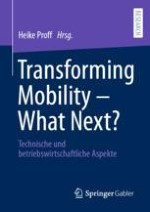2022 | OriginalPaper | Chapter
4. Risiken und Ungewissheit in den globalen Wertschöpfungsketten der Automobilindustrie
Authors : Klaus Middeldorf, Thomas Hanke, Christiane Richter
Published in: Transforming Mobility – What Next?
Publisher: Springer Fachmedien Wiesbaden
Activate our intelligent search to find suitable subject content or patents.
Select sections of text to find matching patents with Artificial Intelligence. powered by
Select sections of text to find additional relevant content using AI-assisted search. powered by
